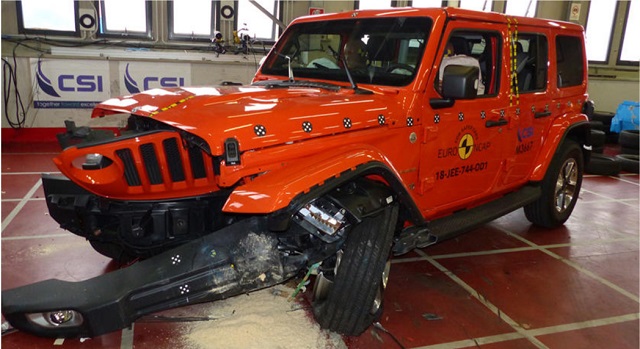
HiAce beats Jeep Wrangler
| THE INDEPENDENT | The all-new Toyota HiAce has scored a 5-star rating in the latest round of testing with the new Nissan Leaf also scoring 5 stars while the all-new Jeep Wrangler slumped to a 1-star rating.
Safety ratings typically indicate the level of safety a vehicle provides for occupants and pedestrians in the event of a crash, as well as its ability — through technology — to avoid or minimise the effects of a crash. These independent safety ratings are used to compare the relative safety between vehicles of similar mass.
The safety ratings are determined based on a series of internationally recognised, independent crash tests and safety assessments – involving a range of destructive physical crash tests, an assessment of on-board safety features and equipment, and performance testing of active collision avoidance technologies.
The vehicles are evaluated on four key areas: Adult Occupant Protection (AOP), Child Occupant Protection (COP), Vulnerable Road User Protection (VRU), and Safety Assist (SA).
“For many, the vehicle is their workplace and Toyota should be applauded for providing the same level of safety in the HiAce as we see in today’s passenger cars and SUVs,” said ANCAP boss, James Goodwin.
He called the HiAce result a “landmark achievement for the Commercial Van segment”.
“This rating shows a new level of market maturity, with modern safety design being prioritised by the majority vehicle brands regardless of the segment or intended use of the vehicle.”
The latest tests were conducted by the Australasian New Car Assessment Program (ANCAP). They follow assessment done by the EuroNCAP.
The Jeep Wrangler scored a dismal 1-star in the EuroNCAP rating; thae same as in the ANCAP rating while the new Toyota HiAce has scored a 5-star rating.
The Wrangler’s crash performance was a real shock. The Wrangler realised scores of just 50% for Adult Occupant Protection, 49% for Vulnerable Road User Protection and 32% for Safety Assist. It was also heavily penalised because it does not have autonomous emergency braking (although this will be available later this year), a key element to ensure eligibility for five-stars.
By way of comparison, the Suzuki Jimny which scored a 3-star rating realised socres of 73% adult occupant protection, 84% child protection, 52% vulnerable road user protection and 50% safety assist.
“The safety performance of the Wrangler is limited, falling well shy of the expected standard in three of the four key areas of assessment,” said Goodwin.
“Chest protection was a concern for the driver and rear passenger in each of the frontal crash tests; a number of penalties were applied for structural deformation and potential leg injury hazards; and base variants lack autonomous emergency braking altogether,” he added.
When it came time to replace the legendary Wrangler, one reviewer said, Jeep went all out to retain the off-roader’s iconic looks and character. But it seems they may have retained a bit too much.
While the previous Hiace held a 4 star rating (under older testing criteria), it was still an older design that placed the driver over the engine, whereas the new model has moved the driver back behind the engine, further enhancing its crash performance.
The all-electric Nissan Leaf also scored well with 5 stars.
“The rating for the Nissan Leaf provides consumers and fleet buyers with another safe electric vehicle option,” said Goodwin.
****
 The Independent Uganda: You get the Truth we Pay the Price
The Independent Uganda: You get the Truth we Pay the Price



